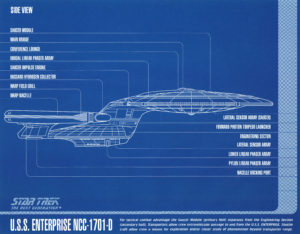What is an enterprise model?
Enterprise Model is a process and a technique within to create a construct of components and their relationships and behaviors with each other with varying levels of abstractions to suit stakeholder needs. Although there are several attempts to define Enterprise Model, none of them define a comprehensive one, but can be adopted close to suitable for your needs. Enterprise model allows visual representation of organization and impact of various applicable business elements affecting its behavior.
Is there more than one definition?
Every modeling technique/framework has attempted to clarify the Enterprise Model. Considering the abstract context, it is correct in its context, but the actual definition embodies in its adoption and implementation within an organization, tends to be hybrid of various available. The definition may change based on the context as well, i.e. Functional, Data, Process, and System modeling. In my opinion, these are 4 notions/aspects of Enterprise Modeling, describing different views of same model depending on different planning and strategy needs of an organization.

Star Trek Blueprint – Side View
Available at : http://www.cygnus-x1.net/links/lcars/star-trek-blueprint-collection.php
Briefly, summarize the purpose and benefits of developing an enterprise model.
The utility of Enterprise Model is visualization in planning via the effective representation of processes, structures, and hierarchies. The benefit of Enterprise Model lies within the concept of planning that visualizes “Global impact of changes before implementation” that if used effectively makes simpler yet comprehensive planning at Enterprise level. Several different modeling techniques address one or more visualization and planning aspect of enterprise model ex. BPMN, Dynamic Enterprise Modeling etc.
Are there any downsides to developing an enterprise model? (answering this question may take some creative thinking)
There are no downsides to enterprise modeling except when developing a new organization. In its infancy, there are no resources available to develop enterprise model, in its classic case, a Startup company does not invest in an Enterprise Model. This technique is well suited for established organizations that have assets that are distributed over years of investment and desires to create efficiencies.
Another way to look at this is BUFD (Big Upfront Design), the enterprise model requires thinking through up-front before diving into implementation steps. In Agile Architectures, this is YAGNI (You Ain’t Gonna Need It) or BFUD (Big Upfront Design) style, which is highly discouraged. The Emergent Architecture or Solution intent (by some process techniques) are based on “Just Enough and Just in Time” for needs described for a short cycle allowing nimble and flexible implementation.
